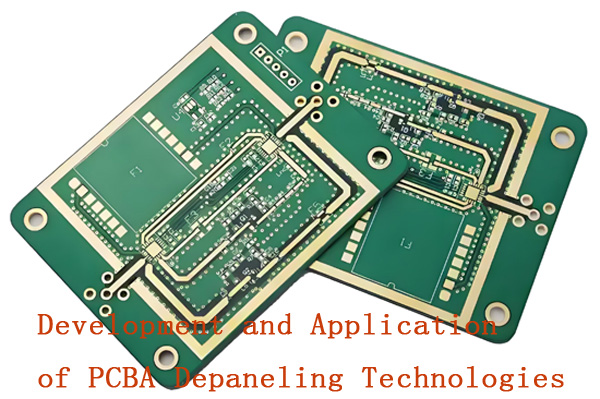When you see a label like “F1” or “F2” on a circuit board, it usually means fuse. Fuses are small parts that help protect the circuit from too much electricity. In this guide, I’ll explain what the “F” stands for, how to find fuses on a PCB, and what to keep in mind when using or replacing them.
- Part 1. What does the letter F mean on a PCB?
- Part 2. What is the F symbol in PCB design?
- Part 3. Does F stand for fuse on a PCB?
- Part 4. What does F1 mean on a circuit board?
- Part 5. Is F on PCB a reference to fuse components?
- Part 6. What does F2 indicate in PCB component labeling?
- Part 7. What does F mean in the silkscreen layer of a PCB?
- Part 8. Why are components labeled F on a circuit board?
- Part 9. What does F stand for in PCB schematic diagrams?
- Part 10. How do you identify a fuse using the F marking on a PCB?
- Part 11. FAQS about Letter F on a PCB
Part 1. What does the letter F mean on a PCB?
The letter F on a PCB typically stands for fuse. It’s part of a reference designator used to identify components in circuit diagrams and on the board itself. For example, “F1” or “F2” would refer to the first or second fuse on the board.
Part 2. What is the F symbol in PCB design?
In PCB design, the F symbol is used as a reference designator prefix for fuses. It helps engineers and technicians quickly locate and identify fuses in the layout, silkscreen, or schematic.
Part 3. Does F stand for fuse on a PCB?
Yes, in most cases, F stands for fuse on a PCB. It’s a standard convention used across the electronics industry to designate protective fuse components that prevent overcurrent damage.
Part 4. What does F1 mean on a circuit board?
F1 refers to the first fuse in the circuit. It’s used to identify a specific fuse location and is usually accompanied by the actual component and its specifications, like amperage rating or type.

Part 5. Is F on PCB a reference to fuse components?
Yes, the F reference in PCB labeling is almost always used for fuse components, whether they’re traditional glass tube fuses or surface-mount PTC resettable types.
Part 6. What does F2 indicate in PCB component labeling?
F2 designates the second fuse in the circuit. The number after “F” simply indicates the order or position of the fuse in the overall design.
Part 7. What does F mean in the silkscreen layer of a PCB?
In the silkscreen layer, F is used to label the physical location of a fuse on the board. It helps technicians visually identify and service the correct component during manufacturing, testing, or repair.
Part 8. Why are components labeled F on a circuit board?
Components are labeled with F to clearly identify them as fuses. This helps distinguish them from other parts like resistors (R), capacitors (C), or diodes (D), aiding in efficient assembly, troubleshooting, and documentation.
Part 9. What does F stand for in PCB schematic diagrams?
In schematic diagrams, F is the standard prefix used to denote a fuse. It makes it easier to trace protection components that are designed to interrupt current during a fault.
Part 10. How do you identify a fuse using the F marking on a PCB?
To identify a fuse, look for a label like F1, F2, or F3 near a small cylindrical, square, or chip-like component. Cross-reference with the circuit schematic to confirm its function and check markings on the fuse for its current rating.
Part 11. FAQS about Letter F on a PCB
What is the function of F-marked components on PCBs?
F-marked components are usually fuses, which protect circuits by breaking the electrical flow during overcurrent conditions.
Are F designators only used for fuses in PCB layouts?
Yes, F is a standard reference for fuses in most PCB designs. Other functions typically use different designators (e.g., R for resistors, D for diodes).
What does F mean in KiCad or Altium Designer PCB files?
In KiCad or Altium, F refers to fuse components. It also appears in reference fields (e.g., F.SilkS for front silkscreen), depending on context.
How does F differ from R or C in PCB labeling?
F = Fuse, R = Resistor, C = Capacitor. Each letter helps identify the component type and is used consistently across schematics and layouts.
Can F stand for function or flag in PCB labeling?
No, F in component labels does not mean function or flag. Those meanings may exist in software settings but not in hardware reference designators.
Is F1 always a fuse on every circuit board?
In most cases, yes. But always confirm with the schematic, as naming conventions may vary slightly in custom or legacy designs.
Are F-labeled parts dangerous if faulty?
Yes, a faulty or blown fuse (F-labeled part) may leave the circuit unprotected, potentially damaging other components or posing safety risks.
How do I replace an F-labeled component on a PCB?
Identify the fuse type and rating (voltage/current), desolder the faulty one carefully, and install an exact replacement to maintain protection.
Are F components polarized in a PCB circuit?
No, fuses are non-polarized and can be installed in either direction, unlike diodes or electrolytic capacitors.
What are common values or ratings for F-labeled PCB parts?
Typical fuse ratings range from 250 mA to 10 A, depending on the circuit. Check for voltage and current specs printed on the component or in the BOM.
A professional with over a decade of experience in the PCB depaneling industry.


